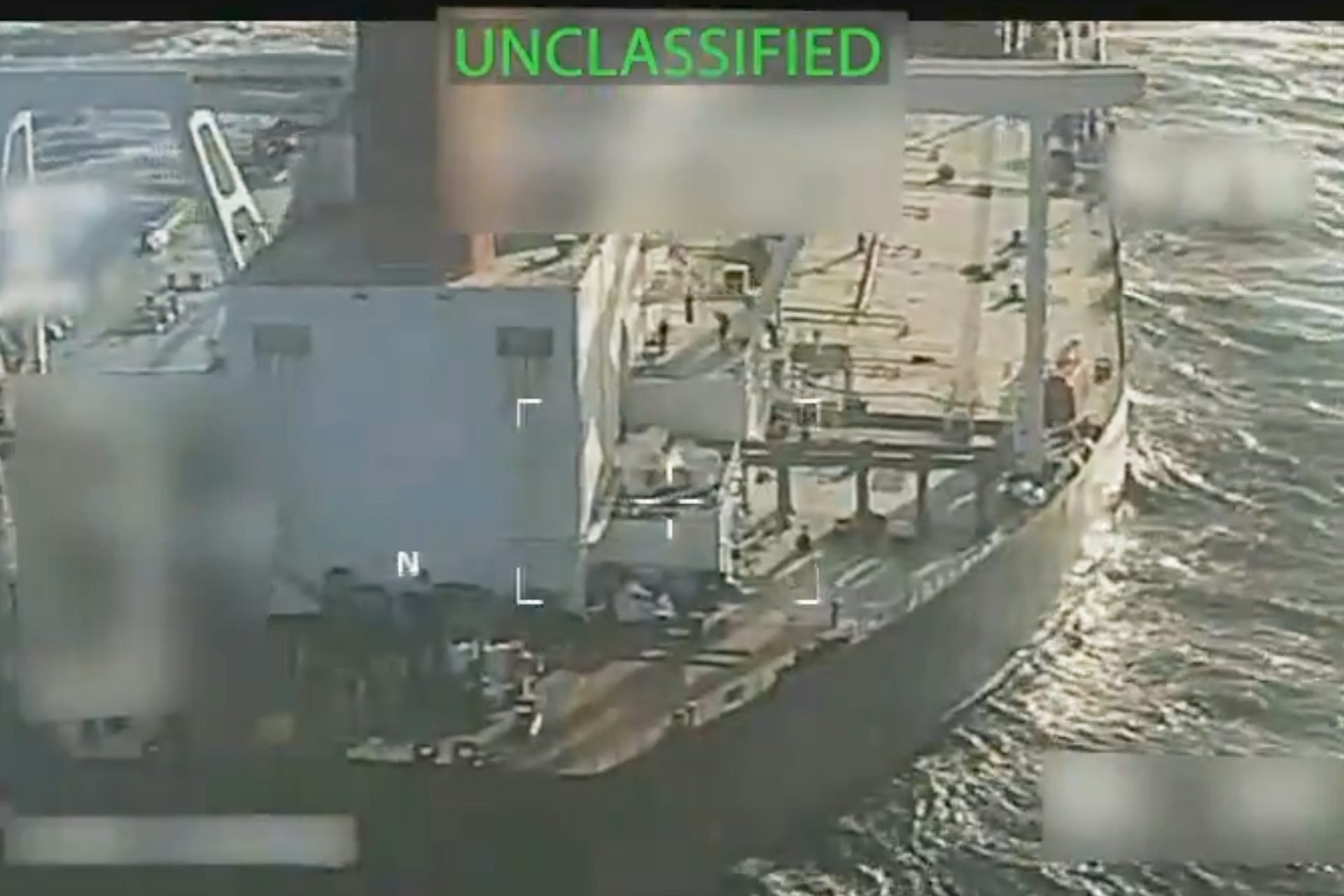25 Years of the International Space Station: What archaeology tells us about living and working in s
Archaeologists have studied how astronauts use the International Space Station to improve its potential future successors.
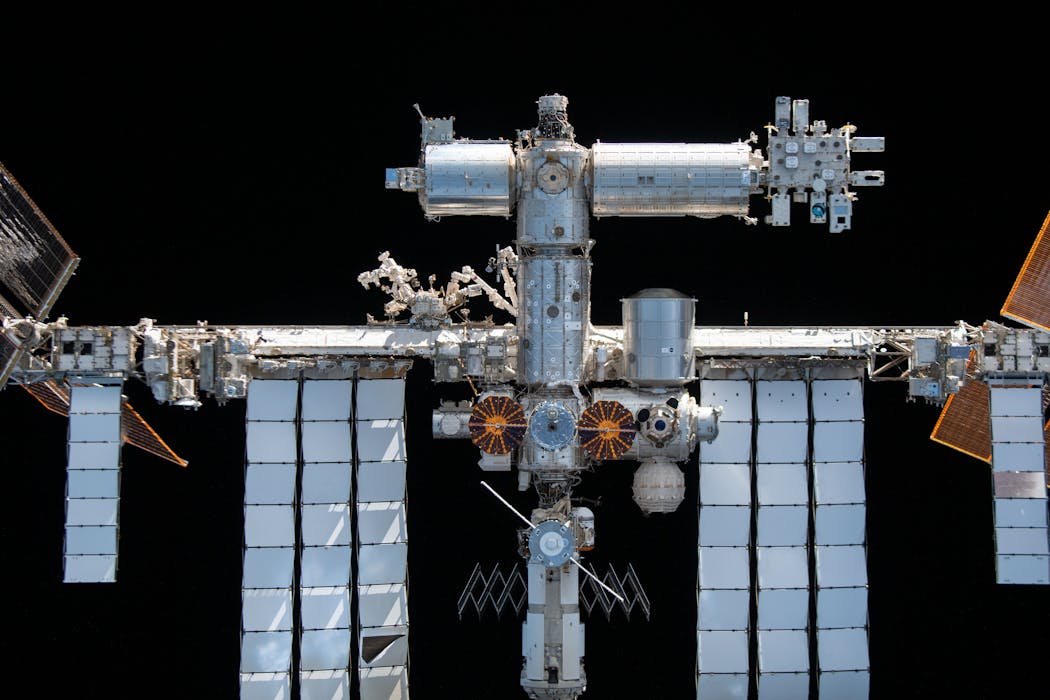
The International Space Station is one of the most remarkable achievements of the modern age. It is the largest, most complex, most expensive and most durable spacecraft ever built.
Its first modules were launched in 1998. The first crew to live on the International Space Station – an American and two Russians – entered it in 2000. Nov. 2, 2025, marks 25 years of continuous habitation by at least two people, and as many as 13 at one time. It is a singular example of international cooperation that has stood the test of time.
Two hundred and ninety people from 26 countries have now visited the space station, several of them staying for a year or more. More than 40% of all the humans who have ever been to space have been International Space Station visitors.
The station has been the locus of thousands of scientific and engineering studies using almost 200 distinct scientific facilities, investigating everything from astronomical phenomena and basic physics to crew health and plant growth. The phenomenon of space tourism was born on the space station. Altogether, astronauts have accumulated almost 127 person-years of experience on the station, and a deep understanding of what it takes to live in low Earth orbit.
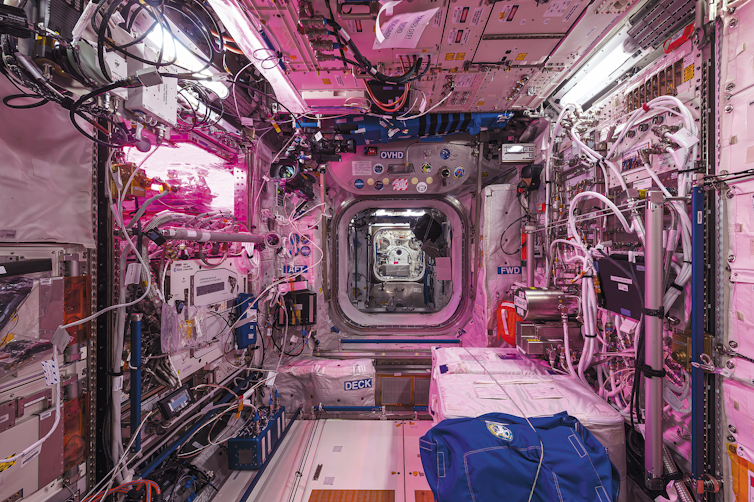
If you’ve ever seen photos of the inside of the International Space Station, you’ve probably noticed the clutter. There are cables everywhere. Equipment sticks out into corridors. It doesn’t look like Star Trek’s Enterprise or other science fiction spacecraft. There’s no shower for the crew, or a kitchen for cooking a meal from scratch. It doesn’t have an area designed for the crew to gather in their downtime. But even without those niceties, it clearly represents a vision of the future from the past, one where humanity would live permanently in space for the first time.
Space archaeology
November 2025, by coincidence, also marks the 10th anniversary of my team’s research on the space station, the International Space Station Archaeological Project. The long history of habitation on the space station makes it perfect for the kind of studies that archaeologists like my colleagues and me carry out.
We recognized that there had been hardly any research on the social and cultural aspects of life in space. We wanted to show space agencies that were already planning three-year missions to Mars what they were overlooking.
We wanted to go beyond just talking to the crew about their experiences, though we have also done that. But as previous studies of contemporary societies have shown, people often don’t want to discuss all their lives with researchers, or they’re unable to articulate all their experiences.
Astronauts on Earth are usually trying to get their next ride back to space, and they understandably don’t want to rock the boat. Our research provides an additional window onto life on a space station by using archaeological evidence: the traces of human interactions with the objects and built spaces of the site.
The problem, of course, is that we can’t go to the station and observe it directly. So we had to come up with other ways to capture data. In November 2015, I realized that we could use the thousands of photos taken by the crew and published by NASA as a starting point. These would allow us to track the movement of people and things around the site over time, and to map the behaviors and associations between them.
In 2022, the International Space Station Archaeological Project also carried out the first archaeological fieldwork off the Earth, an experiment designed by my collaborator, Alice Gorman. We asked the crew to document six sample locations in different modules by taking photos of each one every day for two months.
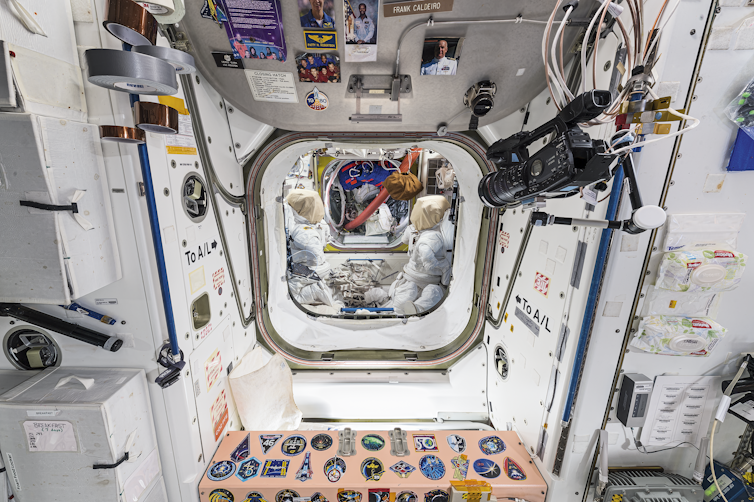
Lessons from photos
We learned that the crew of the International Space Station is a lot like those of us on Earth – perhaps unsurprising, since they live 95% or more of their lives here with the rest of us. They decorate the walls of the station with pictures, memorabilia and, on the Russian side, religious items, the way you might put photos and souvenirs on your refrigerator door to say something about yourself and your family. They make birthday cakes for their colleagues. They love to snack on candy or other special foods that they selected to be sent.
Unlike the rest of us, however, they live without much freedom to make choices about their lives. Their days are governed by lengthy procedures overseen by Mission Control, and by lists of items and their locations.
Crew members do show some signs of autonomy, though. They sometimes create new uses for different areas. They used a maintenance work station for the storage of all kinds of unrelated things, just because it has a lot of Velcro for holding items in place. They have to come up with solutions for storing their toiletry kits because that kind of affordance wasn’t considered necessary by the station’s designers 30 or 40 years ago.
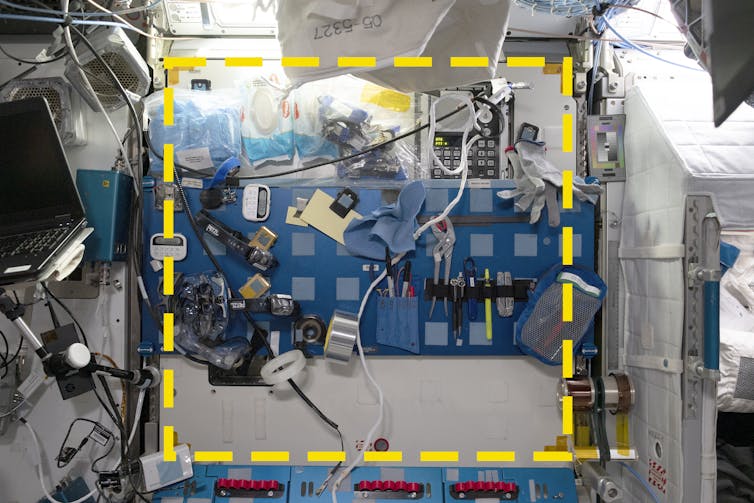
We discovered that despite the international nature of the station, most areas of it are highly nationalized, with each space agency controlling its own modules and, often, the activities going on in each one. This makes sense, since each agency is responsible to their own taxpayers and needs to show how their money is being spent. But it probably isn’t the most efficient way to run what is the most expensive building project in the history of humanity.
In our latest research, we tracked changes in scientific activity, which we found has become increasingly diverse, by documenting the use of specialized experimental equipment. This work was the result of questions from one of the companies competing to build a commercial successor to the International Space Station in low Earth orbit.
The company wanted to know if we could tell them what facilities their customers were likely going to need. Of course, understanding how people have used different parts of a site over time is a typical archaeological problem. They are using our results to improve the experiences of their crews.
The archaeology of the contemporary world
Similar archaeological studies of contemporary issues here on Earth can also make future lives better, whether by studying phenomena such as migration, ethnonationalism or ecological issues.
In this way, we and other contemporary archaeologists are charting a new future for studying the past, a path for our discipline that lies alongside our traditional work of investigating ancient societies and managing heritage resources. Our International Space Station work also demonstrates the relevance of social science research for solving all kinds of problems – even ones that seem to be purely technical, like living in space.
ISSAP received funding from the Australian Research Council. Justin Walsh's co-PI on ISSAP is Dr. Alice Gorman (Flinders University). Walsh co-owns Brick Moon, a space habitat consultancy.
Read These Next
Black-market oil buyers will push Venezuela for bigger discounts following US seizure – starving Mad
Venezuela relies on the black-market oil trade for a large chunk of its revenue. US enforcement actions…
Polytechnic universities focus on practical, career-oriented skills, offering an alternative to trad
Polytechnic universities try to incorporate skills-based learning into education.
Time banks could ease the burden of elder care and promote connection
A diverse team of researchers, concerned that the global elder care crisis cannot be addressed by the…


